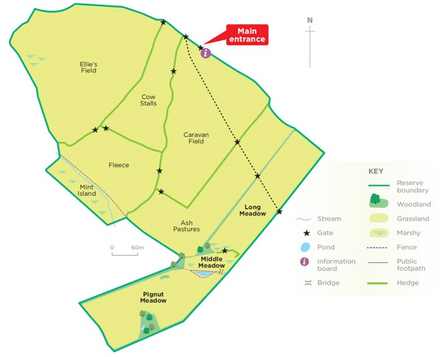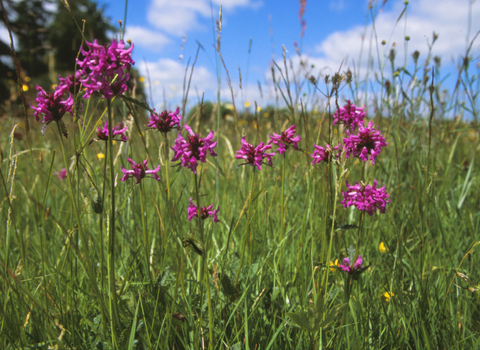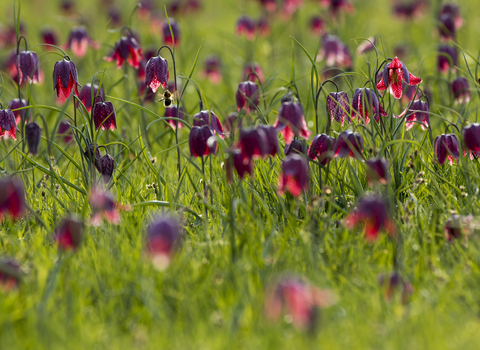A butterfly on devils-bit scabious at Emmett Hill nature reserve, Wiltshire. Credit: Eleanor Dodson.
Emmett Hill Meadows
Location
Know before you go
Dogs
See our FAQ's for more information
When to visit
Opening times
Open at all timesBest time to visit
Spring and summer. Nearby attractions include Keynes Park (4 miles), Malmesbury Abbey (5 miles), North Meadow National Nature Reserve (6 miles).About the reserve
The local landscape of big hedges and small wildflower meadows is one of the most threatened in Britain. These three hay meadows with countless wildflowers form a Site of Special Scientific Interest because of their long history of traditional farming.
In summer, devil’s-bit scabious turns Long Meadow into a haze of purple peppered with betony, saw-wort, sneezewort and heath spotted orchids. Listen for the shivering rustle of yellow rattle seedpods when you brush past them.
Long Meadow has clearly visible ridges and furrows running its length – evidence of an ancient farming system. Look in the damper furrows for ragged robin and creeping Jenny. Pignut Meadow contains an old banked enclosure that was perhaps a cattle pen when the area was open common land. White pignut flowers in May and June. Its flowers feed the larvae of the uncommon chimney-sweeper moth.
In Middle Meadow you can see some old ant hills. ‘Emmett’ is the old name for ant but most ant hills were wiped out by past ploughing. A stream runs alongside Middle Meadow, and there are two ponds where great crested and smooth newts find refuge. Butterflies and moths include the small heath, marsh fritillary, peacock, garden tiger moth and small copper.
We cut Long Meadow for hay in July and then cattle graze it until October. We pollard the hedgerow and ash trees. Pignut Meadow doesn’t grow enough grass to make hay and is just cattle grazed from mid summer onwards.



